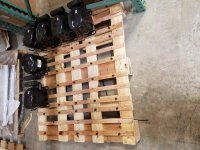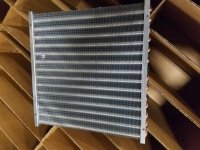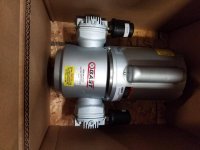Previously I've worked primarily with packaged "no-name" (Shinco, Klimaire) mini-split A/C's with included linesets, stated to be the intended length for the pre-charged (R410A) refrigerant. I used the included lineset, which so far has been long enough for the installation, and didn't add any refrigerant. Just a DIY vacuum job using a manifold gauge (to ensure it holds vacuum, as well as the soap test) and a cheap Harbor Freight vacuum pump (and a mini-split fitting adapter). It's always worked fine and never gave me any problems.
Now I'm looking at a LG LSN240HSV LSN240HSV 2-ton mini-split that doesn't come packaged with a lineset, but with multiple different lengths of linesets available as an optional purchase from the distributor.
Looking at the manual, it states the "standard length" to be 25ft. for 5/8 + 3/8 linesets (page 11):
http://www.appliancefactoryparts.com/content/pdfs/148643-2.pdf
Does this mean that the outdoor unit is pre-charged with enough refrigerant for exactly this length x diameter (25' x 5/8" + 3/8"), and that as long as I don't use a shorter (i.e., 15') or longer (i.e., 30' or 50') lineset, that I can get away with not having to add or remove additional refrigerant?
Now I'm looking at a LG LSN240HSV LSN240HSV 2-ton mini-split that doesn't come packaged with a lineset, but with multiple different lengths of linesets available as an optional purchase from the distributor.
Looking at the manual, it states the "standard length" to be 25ft. for 5/8 + 3/8 linesets (page 11):
http://www.appliancefactoryparts.com/content/pdfs/148643-2.pdf
Does this mean that the outdoor unit is pre-charged with enough refrigerant for exactly this length x diameter (25' x 5/8" + 3/8"), and that as long as I don't use a shorter (i.e., 15') or longer (i.e., 30' or 50') lineset, that I can get away with not having to add or remove additional refrigerant?
Capacity is based on standard length and maximum allowable length is on the basis of reliability. Additional refrigerant must be charged after 7.5m(25ft).








